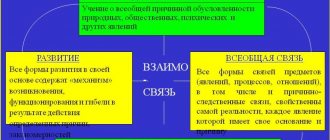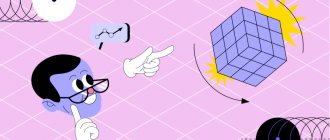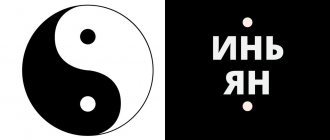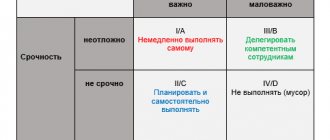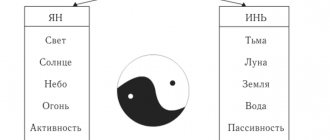What is Occam's Razor?
The postulate in question is expressed in the words “Do not produce entities”
, or
“New entities should not be multiplied (multiplied) unnecessarily
.
More modern versions are: “If you have two equally effective ways to solve a problem, choose the simplest one
,” or
“The simplest explanation is likely to be more accurate than the more complex one
.
In other words, the simplest explanation is preferable to the more complex one. In any incomprehensible situation, you should first of all focus on simple solutions, and reject more complex actions (at least until easier ones have been tried), “cut off” with a conventional razor. Let's return to our example with the operator: when asking you about rebooting the equipment, he chooses the simplest path. And if a reboot does not help, it will begin to sort through and cut off other options - from simple to complex.
Important: Occam’s razor is not a statement, but a so-called maxim. In itself, it does not prove or disprove anything, but only serves as a tool for confirming and challenging
.
This philosophical postulate is based on two principles:
- The principle of economy
, which states that it is better to do something with less effort than to put in more effort. - The principle of plurality
- if you can get by with a small number of actions, you should do so.
Illustrative examples
Albert Einstein paraphrased Occam's razor principle. He called for simplifying while there is such an opportunity. There is also a more modern version: the most accurate message is the minimum length.
Let us give examples of the operation of Occam's razor. The thinker Plato was asked who a person is. The answer was more than interesting: a person is an animal with two legs, but without feathers. After such an explanation, Diogenes brought a plucked rooster to the Academy. He declared that this was the man Plato had mentioned. The latter corrected his description, adding only one phrase: “With flat nails.”
Another example of Occam's razor in action was shown by the mathematician Laplace. Napoleon became interested in why Langrage (a famous French scientist) did not mention the word “God”, often used in conversation, in his writings. Laplace said: “This is because I did not need this hypothesis.”
History of appearance
The maxim in question is associated with the monk and philosopher William of Ockham
(that is, from Occam's village), who wrote in his works: "What can be done on the basis of fewer assumptions should not be done on the basis of more assumptions."
But in fact, this idea was not discovered by him; he only reformulated a saying that was used by Aristotle in the 4th century BC.
e. The name of the technique comes from the name of a small English village in Surrey.
Officially, Occam's razor appeared later, and the clergyman did not suspect that the technique would be given his name. The razor in the title is mentioned as a tool for cutting off unnecessary entities. The latter were understood as any theories/facts/assumptions that do not have empirical confirmation
, that is, evidence obtained as a result of experiments, observations or other actions that can be recorded using the senses.
The method is sometimes called Occam's blade, and also called the Principle of Thrift or the Law of Economy.
It is interesting that Ockham himself wanted to prove the existence of God with the help of a “razor”. He wrote that "nothing should exist without an explanation of a cause, unless it is self-evident or proven by the pages of Holy Scripture." Occam believed that an explanation is not valid unless it is proven by experience, the Bible, or contradicts common sense. At the same time, he was confident that the existence of God is undeniable, because religion is based on faith, not on evidence, and in this matter he did not rely on science.
Interesting data
There are several interpretations and formulations of the Occam's razor rule:
- Philoteus Boehner: “One should not assert many things without necessity.”
- Duns Scotus: “Entities should not be multiplied unnecessarily.”
- Johann Clauberg: “What can be explained by means of less should not be expressed by means of more.”
William Ockham himself tried to prove with this theory that God exists. He believed that plurality would not be needed in explanations. If something can be explained by several arguments and evidence, then it is easy to explain it with one argument.
How to use the method
Is it possible to use a philosophical presumption in the realities of modern life? Yes, as a tool for making decisions and choosing an algorithm of actions
.
If you don’t know what to do or what to choose, Occam’s blade can tell you which direction to move in – at least at the beginning of your path.
This principle can also be used to construct a theory or explanation in the absence of evidence. Until you have verified facts, you can accept the simplest solution that describes what is happening as the truth. This implies that this conventional theory must be modified according to emerging evidence.
Brief biography of William of Occam
The philosopher was born around 1284 in Ockham (England).
As far as is known, he was very young when he entered the Franciscan Order. His studies at the Franciscan monastery focused on the study of logic, and throughout his life his interest in the subject never waned.
The Franciscan friar received a degree in theological studies from Oxford University. It is believed that he is baccalaureus formatus, that is, a candidate for master of theology.
In the autumn of 1324, he left England and went to France (Avignon), Pope John XXII called him to account for charges of heresy. Ockham was not officially condemned, but in 1328 he was excommunicated.
It was long believed that Ockham died in a monastery in Munich in 1349, during the Black Death (also called the Black Death). But perhaps he died there even earlier - in 1347.
How to apply Occam's blade in practice?
Despite the fact that Occam's blade is a philosophical, theoretical postulate, it also finds application in everyday life.
Choose the simplest explanation, solution, algorithm of actions
Let's imagine a situation in which the same phenomenon can be explained:
- using three entities (facts, phenomena, terms, rules);
- with the help of four entities.
If both of the above solutions lead (or could potentially lead to the same result as a result of your actions), you should choose the first one.
Example
Let's assume that your network cable is malfunctioning. Externally, it is intact, it has not been pinched or cut anywhere, so most likely the problem is in the connection point: either with the computer or with the router. At the same time, the router is within reach (one entity - take it and check), and in order to check the connection with the system unit, you need to move the bedside table, crawl under the table, untangle the tangle of wires, find the desired connection in an awkward position... (many entities). It is logical that in such a situation you should first check the connection to the router.
Choose the simplest and most logical explanation
First of all, it is necessary to exclude overly complex options.
, requiring a conglomeration of entities.
Also, assumptions that cannot be confirmed empirically
are removed: observation, measurement, etc. In other words, everything that is not perceived by the senses or is too complex an explanation of the existing facts should be cut off here.
Example
Let's say we wondered why it gets dark at night. We explain this by saying that the Earth revolves around the Sun, and when one of its sides turns towards the sun, the other plunges into darkness, so night falls.
But we can imagine a more interesting option: once a day, a giant dragon living in the sky steals the Sun and hides it in a bag, and after a few hours the reptile gets hot, and it releases the giant fireball back. But after a while she tries to steal the sun again, and so on in a circle.
Based on Occam's philosophy, the last idea should be cut off, because it is nothing more than a heap of entities. We already have a simpler explanation, based on many years of observation of celestial bodies by scientists. This is exactly what is true.
In addition, we exclude entities that are not perceived by the senses, and no one has ever seen a dragon with a bag.
Occam's razor and Epstein's bristles. Axiomatics of human experience
Occam's double-edged razor
“Occam’s Razor” is a well-known principle of economy of thinking, which is formulated as follows: “Entities should not be multiplied beyond necessity.”[1] If a phenomenon can be explained by one or more causes, then the simplest explanation should be preferred. Reducing many things to one thing, complex things to simple ones, is the most reliable path to the truth. On this basis, for example, Laplace, when asked by Napoleon why God was never mentioned in his system of the world, replied that he did not need this hypothesis. “God” is that “superfluous” entity that is not required to explain physical or astronomical phenomena derived from natural causes.
But it is useful to remember that for the English philosopher William of Ockham (1285-1347) and other medieval thinkers, the “razor” served as a tool for “cutting off” all other entities except God. Why are specific reasons needed to explain certain phenomena, if all of them can be derived from the will and providence of God? The only necessary primary essence was God, and everything else in the universe is completely derivative of it. And if subsequently, with the development of empirical science, the principle of “economy of thought” began to turn against supernatural entities, then shouldn’t we be critical of this principle itself? After all, Occam’s “razor” is double-edged and, when explaining the world, it can cut off and declare unnecessary both God and everything except God .
William of Ockham, English philosopher, Franciscan monk (1285-1347)
At different stages of the development of science, Occam's razor, while straightening the logic of evidence, at the same time led to reductionism. For example, there is a great temptation to reduce biological phenomena to physical and chemical ones, i.e. to reduce the “living” as an independent entity, to reduce the organism to the same laws that govern inorganic nature.
In the Critique of Pure Reason, Immanuel Kant expresses skepticism about the presumption of the reduction of essences into a single one: “It is thus affirmed that the very nature of things provides the material for the unity achieved by reason... Although this unity is only an idea, it has always been so earnestly sought that there are more reasons restrain this passion rather than encourage it.”[2] Kant himself states: “Entium varietates non temere esse minuendas.” (“The diversity of entities should not be rashly reduced”, or “The distinction between entities should not be rashly reduced”). Kant advocates the principle of potentially infinite specification, i.e. transition from genera to species and further to subspecies and ever smaller categories of phenomena. “Knowledge of phenomena in their full definition ... requires an unceasingly ongoing specification of our concepts and progress towards still remaining differences, from which the species concept and, even more, the generic concept are abstracted.”
However, Kant's critique of Occam's razor seems limited to me. While offering a consistent specification of phenomena, Kant does not insist on its irreversible nature. If we reduce all salts to two types, acidic and alkaline (his own example), then is it permissible to reduce the essence of acidic and alkaline back to the general essence of salt? Or are “acidity” and “alkalinity” independent, albeit related entities? In other words, does Occam’s razor reduce them, leading to the consubstantiality of salt or even the consubstantiality of salt and earth, and then to the consubstantiality of all physical matter? Obviously, Kant does not approve of such a reduction, but he does not provide decisive arguments against generalization, only proposing to supplement it with specification.
It seems to me that between entities of different levels: genus, species, subspecies, etc. — there is no complete reducibility in either direction . The general is not reducible to its varieties, and the varieties are not reducible to the general. Individuals are not reducible to universals, and universals are not reducible to individuals. After the publication of my book “The Philosophy of the Possible” (2001), where this principle of mutual irreducibility was put forward [3], it received the name “ Epstein’s bristles ” - as a figurative antithesis of “Occam’s razor”, as an affirmation of the multi-essence of being. The principle states: “entities can be multiplied as needed.” Not in excess, but to the extent. But how is this measure determined?
Occam's number. Code and texts.
It is usually believed that there should be much fewer entities than phenomena, since this is the need for knowledge - explaining one thing to another. But let's take such a visual object as an apple - does it have its own special essence that is present in the huge variety of objects called "apples" and distinguishes them from the more general category of "fruit"? According to Seth Lloyd, professor of mechanical engineering at MIT and scientific director of the Electronics Research Laboratory, the information richness of an apple is extremely high. “The Universe, in essence, is a giant computer in which every atom and every elementary particle contains bits of information... <...> There are only several times more bits in an apple than there are atoms - several million billion billion zeros and ones.” [4] In the light of modern information theory, it is difficult to say that a certain individual object can be completely reduced to a certain “generic” essence, for example, an apple - to the general essence of fruits. In the end, each thing is fully explicable only from itself and in this sense represents a special, irreducible entity. The fallacy of reductionism is especially clear now, when phenomena are revealed to us in all their informational complexity .
The principle of economy of thought states that a simple and short description should be preferred to a long and complex one. But is it possible to describe the apple, as a unit of human experience, in a simpler and shorter way than with the word “apple”?
Let us conditionally introduce the following parameter: Occam’s number is the number of universals divided by the number of individuals (realities) that they describe. The smaller the Occam number, the fewer entities needed to explain things, and the more economical the language for describing them.
In the language of information theory, the Occam number is the ratio of code signs and description length . Usually, the more characters in the code, the shorter the description, and vice versa, the simpler the code, the more complex the description of the same things . For example, if the code contains only general concepts, such as “plants”, “animals”, then the description of an apple becomes very long, since it is necessary to enter all the characteristics that distinguish it not only from other fruits, but also from other phenomena of the plant kingdom. If we reduce the description to a minimum, for example, to the concept of “apple”, then, on the contrary, the code will become very long, including the names of all plants, fruits...
The question is at what level is it better to save, i.e. reduce the Occam number: at the code or description ? There are different approaches. I prefer to increase the vocabulary (code) to reduce the length of the description. But then the number of terms and their definitions in the dictionary increases. What is more profitable, “more okkam”: minimizing or maximizing the dictionary and, accordingly, maximizing or minimizing texts?
A dictionary (code) is just one of many texts that describe the variety of world phenomena, including “apples.” There are a huge number of description texts, but there is only one metatext, code, and dictionary on the basis of which all this multitude of descriptions is produced. Therefore, in principle, it is more profitable and economical to increase the length of this meta-text, dictionary, i.e. to multiply the number of entities to a reasonable limit, which makes it possible to reduce the huge number of texts that repeat the same definitions when describing the same objects. Occam's razor is not a principle of economy, but, on the contrary, wastefulness, since, asserting only one essence (God, matter or some other), it presupposes infinitely long descriptions of specific phenomena. Therefore, it is more profitable for thinking to increase the number of code characters, simultaneously reducing the length of many texts. For example, by introducing the concept “apple” into the code, we use it to describe many apples, saving on the definition of this term within each text. So, in order to simplify the texts, the code becomes more complex.
But to a reasonable limit. How is it determined? I believe that the volume of natural language - at least for philosophy and the humanities in general. Natural language, in the entirety of its signs (words, concepts), developed by the natural mind of mankind, is the reasonable limit of the vocabulary (code) with which humanistics can operate .[5] No more, but no less. It is not necessary to expand this vocabulary by introducing tens of thousands of special terms from, say, botany or astronomy. But this vocabulary should not be reduced to the most general categories, such as “matter”, “idea”, “form”, “unity”, “contradiction”... The word “apple” is quite legitimately included in the philosophical code, in the category of entities, with which the humanities operate, since humanity itself, in a collective act of thinking, singled out this subject and endowed it with a special sign in the language.[6]
One can also imagine a moving scale on which the Occam number changes depending on the chosen frame of explanation (frame): now the razor becomes sharper, now the stubble grows . It is possible to selectively “cut off”, essentially reduce certain areas of existence, for example, those studied by physics; and others to leave to pluralistic growth, such as those addressed by the humanities. If we continue the “Occam’s razor” metaphor, then it is permissible to talk about philosophy as a “hairdressing” art. Different “hairstyles” are different models of the universe: from “haircut” to “wild curls”. One of the tasks of philosophy is to explore the applicability of the moving Ockham scale to different areas of existence and discursive strategies.
Reduction and emergence.
What has been said above about Occam's razor is directly related to the central philosophical issues of our time. What is the nature of primary reality and is natural language suitable for describing it?
With the progress of biochemistry and neuropsychology in recent decades, the tendency, already dominant since the mid-19th century, to explain human mental states by the influence of chemical substances has intensified. Nobel laureate biochemist Francis Crick, co-discoverer (with J. Watson) of the DNA double helix, began his book “The Astonishing Hypothesis: The Scientific Search for the Soul”: “The Astonishing Hypothesis is that “You,” your joys and sorrows, your memory and aspirations, your sense of self and free will, are in fact nothing more than the modus operandi of a vast collection of nerve cells and their associated molecules. As Lewis Carroll's Alice would say, “You are nothing more than a bundle of neurons.”[7]
In other words, all ethics and psychology, everything that we call soul and spirit, harmony and genius, is cut off from reality by Occam’s razor and appears only as an emanation of neurons, a subjective experience of chemical and physical reality. F. Crick contrasts his scientific theory of the soul as a “pack of neurons” and even “electronic pathways” with its religious and psychological understanding. The book concludes with a critique of the line from the Psalms: “I praise Thee, for I am wonderfully made” (Ps. 139:14)—the biochemist believes that the psalmist “had only an indirect view of the subtle and intricate nature of our molecular structure.”
Francis Collins, an American geneticist who became famous as the leader of the project to decipher the human genome, but at the same time openly professes his religious views, responded to questions from journalist John Horgan:
Horgan: What do you think about neurotheology, which tries to identify the neural basis of religious experience?
Collins: I think it's fascinating, but not particularly surprising. We humans are made of flesh and blood. Therefore, it would not bother me if, during some mystical experience, I discovered that my temporal lobe was aroused. This does not mean that genuine spirituality is absent here. Those who approach this issue with the presumption that there is nothing outside the natural world will look at this data and say, “Well, see?” And those who consider people to be spiritual creatures will say: “Cool! This mystical experience has a correlation in nature! Isn’t that right?!”[8]
This is one line of argument: if mental states have brain, physical correlates, then this means that physical processes may have some mental prerequisites unknown to us - or rather, known, but only from our internal experience.
Another line of argumentation is also possible. “There is no soul,” there are only neurons. Well, is there flesh? If we examine flesh through an electron microscope, getting down to individual molecules and atoms, then nothing tangible or carnal will be found in nature at all. There are only particles, waves, quanta, probabilities, impulses, in which nothing remains that generates desire, love, admiration. “Carnal” is the property of certain molecular cellular clusters to interact with other molecular cellular clusters at a certain level of their physical and biological organization. “Flesh” is a conditional verbal assumption that we exchange in order to understand and feel each other, because it corresponds to our experience of living beings endowed with a special field of perception. It is in this human range that the concepts of “flesh” and “soul” are formed; here they are the same reality as molecules and atoms in the field of observation of a microscope or synchrophasotron.
The concept of emergence , introduced into philosophy in 1875 by J. G. Lewis in the book “Problems of Life and Spirit” and further developed in process philosophy by A. N. Whitehead and S. Alexander, seems to be the most radical challenge to reductionism and, in general, “razor” thinking. I will cite the judgment of the famous American theoretical physicist Garrett Lisi, author of “The Extremely Simple Theory of Everything,” that the upper levels of human existence are irreducible to the physical and chemical elements of nature, even if they arose from them through self-organization. The English term “emergence”, very significant in philosophy and science, means the emergence of new properties during the transition from one level of existence to another.
“We know that the magic of life comes from emergence. Only an incredibly large number of interactions makes this magic possible. To describe romantic love as a simultaneous mutual injection and oxytocin infusion is to vulgarize the concerted dance of a vast number of molecules, more numerous than there are stars in the observable universe. The numbers are beyond astronomical. There are about 100 trillion atoms in every human cell, and about 100 trillion cells in every person. The number of possible interactions increases exponentially with the number of atoms. It is the emergent qualities of this vast cosmos of interacting entities that make us who we are. <…> Such is the triumph and tragedy of our most ancient and powerful method of science: analysis - understanding a thing as the sum of its parts and their actions. We have learned and benefited from this method, but we have also learned its limitations. When the number of parts becomes enormous, such as the atoms that make up a person, analysis is practically useless for understanding the system, even if the system emerges from its parts and their interactions. We can understand an entity more effectively by using principles derived from experiments at its own level, or at a proximal scale, at its own level.”[9]
Emergence is the emergence of new entities that are irreducible to that from which they arose.[10] This means, in particular, that the phenomenon of love is more accurately described not from lower levels - physical, chemical, cellular, neural - but in a number of phenomena of the same level: tenderness, inspiration, desire, temptation, jealousy... Or even in the context of a higher level emergence: platonic love, Aphrodite Urania, the love of man for God and God for man...
Human reality and natural language
As you know, even the properties of such a simple chemical compound as water are not determined by the properties of the hydrogen and oxygen molecules it contains. Moreover, mental states, not recorded by instruments, but perceived in the inner experience of a person, are irreducible to chemical substances: phenylethyleneamine, oxytocin, etc., observing which through a microscope or describing which with formulas of their molecular composition does not have the slightest resemblance to that love, which we are experiencing. Of course, as a result of processing data on trillions of chemical interactions, it may be possible to create an information map of some instantaneous surge of emotions in a lover. But the single word “love,” a sign of natural language, provides a much more concise and precise description of this phenomenon than petabytes of digital information. The advantage of natural, “analog” language is not only its brevity compared to trillion-dollar series of numbers, but also that it is uniquely accurate in designating those states that are experienced by the subject and instantly recognized by him as his own, as the primary axioms of experience.
It is impossible to speak about either the soul or the flesh more precisely than our human language speaks, since for the language of chemical or mathematical formulas they simply do not exist . In the same way, a person's face disappears when viewed through a microscope. Large pores, skin flakes are visible, then, with sharp magnification, some ornaments, tissue structure, and then cells, molecules, atoms... But the face is no longer there. How are we able to perceive a human personality, its beauty, charm, if even the face is just an illusion? In fact, what makes up the human world and is denoted by the words “face”, “flesh”, “soul”, “personality”, “beauty”, “love” - this is the primary reality commensurate with man . And the reality that we examine through a microscope or telescope and describe in the language of exact sciences is secondary in relation to man and his “imprecise” language. Of course, we are tempted by the idea that the microscope knows the truth better than the human eye. But the microscope was created by man for the human eye; it is also a humanitarian device in its origins and parameters, although in it the human goes beyond the boundaries of itself, which is also extremely human.
This is the answer of language itself to the question, which reality is primary: human - or microscopic, telescopic, instrumental, created by us ourselves? The reality of man himself does not exclude other fields of perception (micro-, mega-), on the contrary, it technically establishes them. But human reality remains the common denominator of all these fields created on its basis and diverging into the spaces of the microworld and megaworld. And no matter how the vague concepts of “flesh” and “soul” are decoded and criticized in other disciplinary languages, they remain meaningful and indivisible in the primary language in which our humanity is expressed. We just cannot go beyond the reality of this language, just as we cannot give birth to ourselves. We can create - but not ourselves, but only from ourselves, that is, based on our already created human reality.
Axiomatics of experience. Return to the subject as the origin.
All scientific research into objective reality ultimately rests on the researching subject himself, his optics, psyche, prisms and horizons of perception - not on the individual, but on humanity as an integral subject. P. Valery warned about this, relying on the paradoxes of modern physics, in the essay “Our Fate and Literature” (1937):
“We must foresee,” I told them [the physicists], “that in the very near future you will have to engage in research into sensitivity and sense organs. This is where your main appliances lie. All the measurements that you, physicists, carry out reveal touch, vision, muscular feeling... Intermediate intermediaries endlessly remove you from the tiny ray in which all these senses are connected to something. You began by imagining to yourself what seemed to you to exist below the level of the senses, in the image of what was perceived by them; but now you have reached the permissible limit of these images and analogies. We need to return to the beginning, to these little-studied feelings with the help of which we perceive our surroundings.”[11]
Valerie is essentially talking about the axiomatics of human experience, which precedes all theoretical axioms . Quantum physics, which was new in Valerie’s era, having reached the limits in the study of the material microworld, itself demanded to “return to the beginning” - to the observer, to the senses as the main devices. And if the humanities express a person’s interest in himself, then this is not a sign of species egoism or narcissism, but the only reliable prerequisite for all other methods of scientific knowledge. We are who we are, and we are forced to accept ourselves as such. “I” is an axiom of our experience, which lies at the basis of any theorems of scientific knowledge . We are given to ourselves as a condition for any further experiments that are carried out by man on the basis of the methods of perception and thinking given to him. Even if we look through a microscope or telescope, we cannot “jump” out of our pupils, from our nerves, from our brain. This axiomatics of experience is the initial act of any scientific knowledge: recognition of oneself, the knower, as the starting point of all further research.
According to the modern Dutch philosopher and computer engineer Bernardo Kastrup, the most economical ontology of all possible is idealism.[12] Materialism, which gives primacy to matter, is a secondary, artificial construction that does not correspond to the principle of parsimony of thinking, which always and everywhere must rely primarily on its own data, on the reality of consciousness itself. We do not know what we call “matter,” we only make indirect assumptions about some substance underlying the observed world; we directly know only consciousness, since it knows and explains itself. The postulation of matter, external to consciousness, as the primary reality is an abstraction that goes beyond the limits of reliable experience. It is known that Samuel Johnson, in response to the solipsistic argument of his older contemporary Bishop Berkeley that the world is only our sensations, struck his foot hard on a stone and exclaimed: “This is how I refute it.” The concreteness, hardness, tangibility, impenetrability of physical objects is the reason why most people reject idealism. To this Kastrup objects that tangibility itself, impenetrability, etc. - these are also qualities of our experience, a projection of sensations that introduce us to the world. The stone itself, outside of our visual and tactile sensations, is an empty abstraction and has no qualities.[13]
So, consciousness, according to Kastrup, is a primary reality that explains itself. Thus, the “ difficult problem of consciousness ,” as the Australian philosopher David Chalmers called it, is removed—the problem of deducing the indisputable, self-evident experience of consciousness from the material structure of the brain and the entire universe. More precisely, this problem does not even arise, since consciousness is derived from itself, it is an existential primitive, not reducible to anything else.
Kastrup's idealistic monism causes me strong objections, since when eliminating the problem of consciousness, the “difficult problem of matter” arises: how to deduce its existence from the primacy of mental structures? [14] I proceed from another philosophical principle, which can be designated as “duomonism”. Existence, like a Mobius strip, constantly turns over from one side to the other: mentality turns into materiality (brain), and materiality turns into mentality (consciousness). There is only one tape, but its main property is reversibility . If we write “mentality” on one side of the tape and “matter” on the other, then moving along one side we come to the other. Inversion underlies the universe as a kind of inversum . Universum is inversum .
Inversion is not a reduction to one thing, it is precisely two-sidedness, the very property of reversibility as primary in relation to both the material and the mental. Consciousness always resides (finds itself) in the world, to the same extent that the world resides (discovers itself) in consciousness. What do these two ways of being, material and mental, have in common? — The preposition “in”, indicating the mutual inclusion of consciousness and the world: one in the other. Wed. from F. Tyutchev: “Everything is in me, and I am in everything!” What is primary is not the mental or the material, but their very ability to reside in each other, to turn into each other. This is not the dualism of two substances in the Cartesian sense, but the monism of reversibility, which is emblematically expressed in the very concept of “universum”, literally “one rotation” (from the Latin unus, one, and versus, the participle of the verb vertere, to rotate). Rotation requires that whatever is spinning has at least two sides.
Reality as intersubjectivity. From entities to beings .
Contrary to the trivial idea of the triumph of materialism in the methodology of modern science, at this stage of its development we are rather on the mental side of the Mobius strip. It is consciousness that increasingly reveals the properties of the existential primitive. The nature of reality is changing dramatically with the invention of new technologies capable of reproducing the material properties of objects. Previously, the real was identified with the objective, accessible to observation and recording by instruments. On the contrary, subjective, i.e. consciousness, will, feelings were considered rather unreal and belonged to the sphere of imagination . However, reality most quickly loses its support precisely in the realm of the objective . There is no longer any fundamental difference between a real object and its exact copy created by nanotechnology at the atomic level or by means of three-dimensional printing. A counterfeit of a material object is indistinguishable from the object itself. The simulacrum successfully displaces any original, or rather, cancels the very status of the original. All items are, in principle, virtually reproducible. Holography creates a complete optical illusion of an object, and future nanotechnology will be able to build exact copies of any objects from elementary particles, reproducing their tactile properties, smells, etc.
And then it is the subjective that turns out to be a much more reliable support for the real. Everything can be faked - just not the state of the subject, his thought, will and desire. A perfectly forged item is the same thing. A forged will is no longer will, but the absence of it. Fake love is no longer love, but just a pretense. It is impossible to fake faith, fear or joy, since they are experienced by the subject from within and their fake means their absence.
And the deeper we dive into the realm of the mental, the more reliable reality is and the lower the risk of its falsification. The most hidden thought is more real than the word that expresses it (“a thought expressed is a lie” - F. Tyutchev). At the very beginning of Charlie Kaufman's just-released film I'm Thinking of Ending This (2020), the following maxim sounds: “Sometimes a thought is closer to the truth, to reality, than an action. You can say anything, do anything, but you cannot fake a thought.”[15] The power of reason and will becomes decisive in shaping reality: what we want, what we insist on, what we believe. “I” or “we”, by our conscious effort, determine what will be, what will be included in the existing composition of being. This is one of the main paradoxes of modern “materialistic” civilization. It is thanks to the latest scientific technologies and the art of “simulation” that the importance of the human and even the purely personal does not fall, but increases. Reality is not “the world as it is”, not “the totality of material phenomena”, not “objective reality given to us in sensations” - such materialism is increasingly perceived as philosophical “suck”. The objective gives way to the subjective. It is no longer “what”, but “who” that lies at the basis of things , so to speak, broadcasting, carrying the message, voice, intention of the subject.
Of course, “Occam’s razor” can also invade the realm of “who-ontology,” promoting solipsism, cutting off everything that is located outside of my “I” and the subjective world outlined by it. However, it would be more accurate to say that Ockham’s principle: “do not multiply entities beyond necessity” turns out to be inapplicable in someone-ontology, since we are no longer talking about entities at all, but about beings . Being is a special category of being, deeply different from essence, as well as from existence, and cannot be reduced to essentialism and existentialism. The creature is “self-essential” and unique; it itself sets the forms of its existence. A creature is a self-acting “someone” whose existence is determined by its own will, intentions, needs, autonomous in relation to its environment. A being is something that can behave, i.e. to be the subject of desire and action. The reflexive pronoun “oneself” appears in the language as a special logical-grammatical category, central to who-ontology.
Who-ontology is a much less developed area of philosophy than what-ontology, therefore, shifting the focus of attention from essence to being, it is necessary to re-build a number of alternative concepts.[16] The axiomatics of human experience include its sharedness with others. Consciousness is not only always about something (intentionality), but also with someone (addressedness), which is imprinted in the very structure of this concept - consciousness . This is a tracing paper from the Latin conscientia, which literally means “shared knowledge” (from the verb “conscire” - to know together with another, “to know”). Thus, reality is increasingly defined not just subjectively, but intersubjectively , as a dialogical relationship between beings, more precisely, as the reality of another being - an external will and an external desire . At the end of the aforementioned film “I'm Thinking of How to End It All,” the main character accepts the Nobel Prize for his most fundamental discovery, which is formulated as follows: “Only in the mysterious equations of love can any logical reasons be found.” And further, addressing the hall filled with all the characters of his life, memory and imagination: “You are the reason that I am. You are all my reasons.”
This is the new criterion of reality - not the materiality of an object, but the presence of thought and will that meets me from the outside - other beings in their focus on me. My desire, volition, desirability, love - or, on the contrary, undesirability, unacceptability, rejection. Reality embraces the existence of all things, since they are also participants and mediators in the interaction of consciousnesses. It is the omnipotence of technology, which takes possession of the material world and freely builds it out of itself, that transfers the attributes of primary reality into the sphere of intersubjective experience.
Published: Occam's razor and the axiomatics of human experience. The problem of reducing/multiplying entities in a modern context. Philosophical polylogue. Journal of the International Center for the Study of Russian Philosophy, St. Petersburg University. St. Petersburg, 2021 (June 5), issue 2 (8) 129-142.
[1] “Non sunt multiplicanda entia sine necessitate.” The English philosopher and monk William of Ockham (1285-1347) has a slightly different formulation: “Multiple should not be asserted without necessity.” The current one appeared much later, in the 17th century.
[2] I. Kant. "On the regulative application of the ideas of pure reason." https://psylib.ukrweb.net/books/kanti02/txt21.htm All further quotes from Kant are from the same publication.
[3] Epshtein M.N. Philosophy of the possible. St. Petersburg: Aletheia (series “Bodies of Thought”), 2001, pp. 126-137. Expanded version of the book in English: Mikhail Epstein. A Philosophy of the Possible: Modalities in Thought and Culture. Transl. by Vern W. McGee and Marina Eskina.Boston, Leiden et al: Brill Academic Publishers/Rodopi (Value Inquiry Book Series 333), 2021, pp. 117–129.
[4] Lloyd S. Programming the Universe. Quantum computer and the future of science. Moscow: ANF, 2013, p. 7, 10. Lloyd essentially confirms the well-known judgment of Democritus that the essence of a thing is inseparable from the thing itself and is derived from the atoms of which it is composed. According to Aristotle, “Democritus considers the nature of the eternal to be small entities, infinite in number.” https://www.mgl.ru/library/24/Demokrit_Barnes.html
[5] On the importance of natural language and frequency vocabulary in the formation of philosophical categories, see “The preposition “in” as a concept.” Frequency dictionary and philosophical picture of the world.” In the book. Epshtein M. N. Space sign. On the future of the humanities. M.: New Literary Review, 2004, pp. 228-253.
[6] For more details, see Personal code. Individuals and universals in the humanities, in the book. Epstein M. N. From knowledge to creativity. How the humanities can change the world. M.-SPb.: Center for Humanitarian Initiatives, 2021, pp. 429-443. https://imwerden.de/pdf/epstein_ot_znaniya_k_tvorchestvu_2016.pdf
[7] Crick F. Astonishing Hypothesis: The Scientific Search for Soul. – New York: Charles Scribner's Sons, 1994. – R. 3.
[8] "The Scientist as Believer (J. Horgan interviewed Francis Collins)." National Geographic Magazine, February 2009. https://inters.org/Collins-Scientist-Believer
[9] Lisi, Antony Garrett. Emergence, in This Idea Is Brilliant. Lost, Overlooked, and Underappreciated Scientific Concepts Everyone Should Know. Ed. by John Brockman: New York et al. Harper Perennial, 2021, pp. 21–22.
[10] The transition from the reductionist to the emergent approach is considered on the basis of analytical philosophy and its conversion into the philosophy of synthesis in my article “From analysis to synthesis. On the vocation of philosophy in the 21st century” // Questions of Philosophy. 2019, no. 7. pp. 52-63.
[11] Valerie Paul. Aesthetic infinity. Essays. Per. from French by M. Taimanova. St. Petersburg: Azbuka, 2021, P.263.
[12] Kastrup Bernardo. The Idea of the World: A Multi-Disciplinary Argument for the Mental Nature of Reality. Winchester, UK; Washington, USA: Iff Books, 2021, 312 pp. Further, all references to this book are given in the text of the article.
[13] Kastrup Bernardo, op. cit., p. 131.
[14] See my polemic with Castorp’s monism in the article “Everything is from rotation! Mentality turns into materiality (brain), and materiality turns into mentality (consciousness)” // Nezavisimaya Gazeta (Appendix “Science”). 2021, October 8, pp. 9, 12. https://www.ng.ru/science/2019-10-08/9_7696_rotation.html
[15] This statement is from the novel of the same name by Canadian writer Iain Reid, on which the film is based (Iain Reid, I'm Thinking of Ending Things, 2016; literally - “I think about the ending of things”). By the way, this title also lends itself to metaphysical interpretation: if thought is the only reality, then it puts an end to all things
[16] In particular, the concept of “who” brings ontology closer to theology, since man shares the property of “being a being” with God. It is no coincidence that the most fundamental criticism of the concept of “essence” came from the theology of Gregory Palamas, who distinguishes between the unknowable essence (essence) and the manifested energy of God. Essence is eternally predetermined and self-identical, and energy is a spontaneous expression of the will of God and manifests itself as grace, and in man as free will to accept or reject this grace. The energetic branch of modern Orthodox theology is developing more dynamically than the essentialist one, largely thanks to the works of Sergei Khoruzhy (see, for example, his book “Essays on Synergetic Anthropology.” - M.: 2005).
Is Occam's razor universal?
Unfortunately, this method cannot be called universal. The main disadvantages of Occam's razor
:
- Subjectivity of opinion
There are disagreements regarding what is considered simple, since this is a subjective concept. - Simplicity is not always the same as truth.
Often, an elementary explanation or solution to a problem is incorrect.
Sometimes using a razor leads to a dead end
. For example, believers may appeal to the concept of Occam's razor to prove the existence of God - because it is easier to accept that he created the world around us than to think that the complex and orderly universe around us was the result of the Big Bang. But atheists can also say that it is easier to explain the creation of the world using the laws of physics than to resort to using another entity - God.
In addition, any conspiracy theories are strictly cut off with a razor.
, because the explanations of those who believe in them tend to be complex and involve a large number of participants.
In 1983, a group of scientists from Oxford developed the Occam programming language, named after the philosophical principle. His goal was to keep the coding process simple.
[edit] Links
- An accessible, albeit far-fetched explanation for inquisitive minds in the form of a sci-fi story. There are aliens and a universal conspiracy, Sturgeon knows how.
- Use of Occam's razor in controversy with creationists
- Why Occam's razor fails.
| [ + ] Occam's razor Matan | |||||||||||||||
| |||||||||||||||
The meaning of the term "razor"
In philosophy, the term “razor” is understood as a tool that helps to discard (“shave off”, from the English shave away
) unlikely, implausible explanations for a phenomenon. Shave as a noun has, among other things, the meaning of “hoax”, “deception”, hence the verb shave means “to mystify”, “to deceive”; the addition away (shave away) means the reverse process, that is, the establishment of truth. However, in common vocabulary the verb shave means “to shave.” And since the shaving tool is a razor, a blade (razor), the same name was transferred to the “instrument” for establishing the truth. Examples of other “razors”: Popper’s falsifiability principle, Hanlon’s razor.
Hanlon's razor
This is a mental model that can be explained as: not attributing malice to what may be simple human error.
For example:
- your colleague didn't come to the meeting? Perhaps this did not happen out of spite for you, but because he mixed up the time;
- did the waiter mix up your order? maybe he just got yelled at;
- Does your new friend take a long time to respond to your message? Perhaps you just entered the address incorrectly?
Using Hanlon's razor in everyday life can improve interpersonal relationships, help you become less judgmental, and increase rationality. Using Hanlon's razor, a person shows more empathy.
Thus, the value of Hanlon's razor can be seen in personal and business relationships.
Historical excursion
The theory was named after the English philosopher and Franciscan monk William of Ockham, who lived in the 14th century. The proponent of nominalism is not the originator of this principle. But it was he who began to often use it to assess current events.
However, many of his contemporaries noted that limiting oneself to the simplest version of a situation is not always the correct or best solution. This was especially true for religious research.
